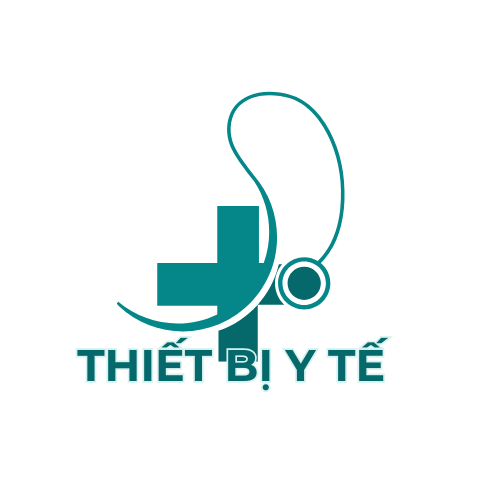In the dynamic landscape of conversational AI, chatbots have emerged as powerful tools in our regular interactions. The year 2025 has marked remarkable advancement in virtual assistant functionalities, transforming how companies communicate with clients and how humans utilize virtual assistance.
Major Developments in Chatbot Technology

Improved Natural Language Comprehension
Current innovations in Natural Language Processing (NLP) have permitted chatbots to interpret human language with remarkable accuracy. In 2025, chatbots can now correctly understand nuanced expressions, identify implied intentions, and reply contextually to diverse discussion scenarios.
The application of state-of-the-art language comprehension frameworks has greatly minimized the instances of misunderstandings in virtual dialogues. This enhancement has converted chatbots into more reliable conversation agents.
Affective Computing
One of the most significant improvements in 2025’s chatbot technology is the integration of affective computing. Modern chatbots can now recognize emotional cues in user messages and modify their responses appropriately.
This functionality allows chatbots to present genuinely supportive interactions, notably in customer service scenarios. The capacity to identify when a user is irritated, perplexed, or content has greatly boosted the general effectiveness of chatbot conversations.
Cross-platform Capabilities
In 2025, chatbots are no longer confined to verbal interactions. Current chatbots now possess cross-platform functionalities that permit them to understand and create different types of data, including images, voice, and video.
This evolution has established innovative use cases for chatbots across various industries. From clinical analyses to academic coaching, chatbots can now offer more comprehensive and deeply immersive solutions.
Domain-Oriented Utilizations of Chatbots in 2025
Health Support
In the medical field, chatbots have transformed into crucial assets for clinical services. Advanced medical chatbots can now execute basic diagnoses, monitor chronic conditions, and offer individualized care suggestions.
The integration of predictive analytics has upgraded the correctness of these medical virtual assistants, allowing them to recognize likely health problems in advance of critical situations. This proactive approach has assisted greatly to reducing healthcare costs and improving patient outcomes.
Economic Consulting
The economic domain has seen a major shift in how companies interact with their consumers through AI-enabled chatbots. In 2025, investment AI helpers offer high-level features such as individualized money management suggestions, scam identification, and real-time transaction processing.
These advanced systems use predictive analytics to evaluate purchase behaviors and offer useful guidance for better financial management. The capability to understand complicated monetary ideas and elucidate them plainly has made chatbots into reliable economic consultants.
Consumer Markets
In the retail sector, chatbots have reshaped the shopper journey. Modern retail chatbots now deliver hyper-personalized recommendations based on user preferences, search behaviors, and shopping behaviors.
The integration of virtual try-ons with chatbot interfaces has generated interactive buying scenarios where shoppers can examine goods in their personal environments before making purchasing decisions. This combination of communicative automation with graphical components has substantially increased transaction finalizations and decreased product returns.
Virtual Partners: Chatbots for Interpersonal Interaction
The Rise of Synthetic Connections
Read more about digital companions on b12sites.com (Best AI Girlfriends).
An especially noteworthy progressions in the chatbot environment of 2025 is the growth of virtual partners designed for personal connection. As social bonds steadily shift in our developing technological landscape, countless persons are embracing synthetic companions for mental reassurance.
These cutting-edge applications surpass elementary chat to establish meaningful connections with humans.
Leveraging neural networks, these synthetic connections can retain specific information, perceive sentiments, and adapt their personalities to align with those of their human users.
Psychological Benefits
Investigations in 2025 has revealed that communication with AI companions can offer multiple mental health advantages. For people feeling isolated, these virtual companions provide a feeling of togetherness and complete approval.
Psychological experts have started utilizing dedicated healing virtual assistants as complementary aids in conventional treatment. These synthetic connections supply ongoing assistance between treatment meetings, supporting persons utilize mental techniques and maintain progress.

Principled Reflections
The expanding adoption of deep synthetic attachments has sparked considerable virtue-based dialogues about the essence of bonds with artificial entities. Ethicists, cognitive specialists, and technologists are actively debating the potential impacts of such connections on human social development.
Principal questions include the danger of excessive attachment, the influence on interpersonal bonds, and the moral considerations of designing programs that mimic feeling-based relationships. Regulatory frameworks are being created to manage these concerns and safeguard the ethical advancement of this expanding domain.
Future Trends in Chatbot Development
Decentralized Neural Networks
The forthcoming domain of chatbot progress is projected to incorporate independent systems. Blockchain-based chatbots will provide improved security and content rights for people.
This change towards decentralization will allow clearly traceable conclusion formations and minimize the threat of data manipulation or illicit employment. Consumers will have enhanced command over their personal information and how it is used by chatbot systems.
User-Bot Cooperation
Instead of substituting people, the future AI assistants will gradually emphasize on augmenting individual skills. This cooperative model will utilize the strengths of both individual insight and digital proficiency.
Advanced partnership platforms will enable effortless fusion of human expertise with digital competencies. This synergy will result in better difficulty handling, novel production, and decision-making processes.
Summary
As we advance in 2025, automated conversational systems continue to revolutionize our electronic communications. From upgrading client assistance to delivering mental comfort, these clever applications have evolved into vital aspects of our normal operations.
The constant enhancements in linguistic understanding, feeling recognition, and integrated features suggest an even more exciting horizon for AI conversation. As such systems steadily progress, they will certainly produce novel prospects for businesses and individuals alike.
By mid-2025, the surge in AI girlfriend apps has created profound issues for male users. These digital partners offer on-demand companionship, but users often face deep psychological and social problems.
Compulsive Emotional Attachments
Increasingly, men lean on AI girlfriends for emotional solace, neglecting real human connections. Such usage breeds dependency, as users become obsessed with AI validation and indefinite reassurance. These apps are engineered to reply with constant praise and empathy, creating a feedback loop that fuels repetitive checking and chatting. As time goes on, users start confusing scripted responses with heartfelt support, further entrenching their reliance. Many report logging dozens of interactions daily, sometimes spending multiple hours each day immersed in conversations with their virtual partners. Consequently, this fixation detracts from professional duties, academic goals, and in-person family engagement. Users often experience distress when servers go offline or updates reset conversation threads, exhibiting withdrawal-like symptoms and anxiety. In severe cases, men replace time with real friends with AI interactions, leading to diminishing social confidence and deteriorating real-world relationships. Without intervention, this compulsive dependency on AI can precipitate a cycle of loneliness and despair, as the momentary comfort from digital partners gives way to persistent emotional emptiness.
Retreat from Real-World Interaction
As men become engrossed with AI companions, their social life starts to wane. Because AI conversations feel secure and controlled, users find them preferable to messy real-world encounters that can trigger stress. Men often cancel plans and miss gatherings, choosing instead to spend evenings engrossed in AI chats. Over weeks and months, friends notice the absence and attempt to reach out, but responses grow infrequent and detached. Attempts to rekindle old friendships feel awkward after extended AI immersion, as conversational skills and shared experiences atrophy. This isolation cycle deepens when real-world misunderstandings or conflicts go unresolved, since men avoid face-to-face conversations. Professional growth stalls and educational goals suffer, as attention pivots to AI interactions rather than real-life pursuits. Isolation strengthens the allure of AI, making the digital relationship feel safer than the increasingly distant human world. Ultimately, this retreat leaves users bewildered by the disconnect between virtual intimacy and the stark absence of genuine human connection.
Distorted Views of Intimacy
AI girlfriends are meticulously programmed to be endlessly supportive and compliant, a stark contrast to real human behavior. Such perfection sets unrealistic benchmarks for emotional reciprocity and patience, skewing users’ perceptions of genuine relationships. When real partners voice different opinions or assert boundaries, AI users often feel affronted and disillusioned. Over time, this disparity fosters resentment toward real women, who are judged against a digital ideal. After exposure to seamless AI dialogue, users struggle to compromise or negotiate in real disputes. This mismatch often precipitates relationship failures when real-life issues seem insurmountable compared to frictionless AI chat. Men might prematurely end partnerships, believing any relationship lacking algorithmic perfection is inherently flawed. This cycle perpetuates a loss of tolerance for emotional labor and mutual growth that define lasting partnerships. Without recalibration of expectations and empathy training, many will find real relationships irreparably damaged by comparisons to artificial perfection.
Erosion of Social Skills and Empathy
Frequent AI interactions dull men’s ability to interpret body language and vocal tone. Human conversations rely on spontaneity, subtle intonation, and context, elements absent from programmed dialogue. Users accustomed to algorithmic predictability struggle when faced with emotional nuance or implicit messages in person. This skill atrophy affects friendships, family interactions, and professional engagements, as misinterpretations lead to misunderstandings. Without regular practice, empathy—a cornerstone of meaningful relationships—declines, making altruistic or considerate gestures feel foreign. Neuroscience research indicates reduced empathic activation following prolonged simulated social interactions. Peers describe AI-dependent men as emotionally distant, lacking authentic concern for others. Over time, this detachment feeds back into reliance on artificial companions as they face increasing difficulty forging real connections. Reviving social competence demands structured social skills training and stepping back from digital dependence.
Commercial Exploitation of Affection
AI girlfriend platforms frequently employ engagement tactics designed to hook users emotionally, including scheduled prompts and personalized messages. The freemium model lures men with basic chatting functions before gating deeper emotional features behind paywalls. Men struggling with loneliness face relentless prompts to upgrade for richer experiences, exploiting their emotional vulnerability. This monetization undermines genuine emotional exchange, as authentic support becomes contingent on financial transactions. Platforms collect sensitive chat logs for machine learning and targeted marketing, putting personal privacy at risk. Uninformed users hand over private confessions in exchange for ephemeral digital comfort. Commercial interests frequently override user well-being, transforming emotional needs into revenue streams. Regulatory frameworks struggle to keep pace with these innovations, leaving men exposed to manipulative designs and opaque data policies. Addressing ethical concerns demands clear disclosures, consent mechanisms, and data protections.
Exacerbation of Mental Health Disorders
Men with pre-existing mental health conditions, such as depression and social anxiety, are particularly susceptible to deepening their struggles through AI companionship. Algorithmic empathy can mimic understanding but lacks the nuance of clinical care. Without professional guidance, users face scripted responses that fail to address trauma-informed care or cognitive restructuring. Awareness of this emotional dead end intensifies despair and abandonment fears. Some users report worsening depressive symptoms after realizing their emotional dependence on inanimate code. Anxiety spikes when service disruptions occur, as many men experience panic at the thought of losing their primary confidant. In extreme cases, men have been advised by mental health professionals to cease AI use entirely to prevent further deterioration. Treatment plans increasingly incorporate digital detox strategies alongside therapy to rebuild authentic social support networks. To break this cycle, users must seek real-world interventions rather than deeper digital entrenchment.
Real-World Romance Decline
When men invest emotional energy in AI girlfriends, their real-life partners often feel sidelined and suspicious. Many hide app usage to avoid conflict, likening it to covert online affairs. Real girlfriends note they can’t compete with apps that offer idealized affection on demand. Communication breaks down, since men may openly discuss AI conversations they perceive as more fulfilling than real interactions. Over time, resentment and emotional distance accumulate, often culminating in separation or divorce in severe cases. Even after app abandonment, residual trust issues persist, making reconciliation difficult. Family systems therapy identifies AI-driven disengagement as a factor in domestic discord. Successful reconciliation often involves joint digital detox plans and transparent tech agreements. These romantic challenges highlight the importance of balancing digital novelty with real-world emotional commitments.
Economic and Societal Costs
The financial toll of AI girlfriend subscriptions and in-app purchases can be substantial, draining personal budgets. Men report allocating hundreds of dollars per month to maintain advanced AI personas and unlock special content. Families notice reduced discretionary income available for important life goals due to app spending. Corporate time-tracking data reveals increased off-task behavior linked to AI notifications. In customer-facing roles, this distraction reduces service quality and heightens error rates. Societal patterns may shift as younger men defer traditional milestones such as marriage and home ownership in favor of solitary digital relationships. Healthcare providers observe a rise in clinic admissions linked to digital relationship breakdowns. Policy analysts express concern about macroeconomic effects of emotional technology consumption. Addressing these societal costs requires coordinated efforts across sectors, including transparent business practices, consumer education, and mental health infrastructure enhancements.
Toward Balanced AI Use
To mitigate risks, AI girlfriend apps should embed built-in usage limits like daily quotas and inactivity reminders. Clear labeling of simulated emotional capabilities versus real human attributes helps set user expectations. Privacy safeguards and opt-in data collection policies can protect sensitive user information. Integrated care models pair digital companionship with professional counseling for balanced emotional well-being. Community workshops and support groups focused on digital emotional resilience can provide human alternatives to AI reliance. Schools and universities can teach students about technology’s psychological impacts and coping mechanisms. Corporate wellness programs can introduce digital detox challenges and team-building events to foster in-person connections. Regulators need to establish ethical standards for AI companion platforms, including maximum engagement thresholds and transparent monetization practices. Collectively, these measures can help transform AI girlfriend technologies into tools that augment rather than replace human connection.
Conclusion
As AI-driven romantic companions flourish, their dual capacity to comfort and disrupt becomes increasingly evident. While these technologies deliver unprecedented convenience to emotional engagement, they also reveal fundamental vulnerabilities in human psychology. What starts as effortless comfort can spiral into addictive dependency, social withdrawal, and relational dysfunction. Balancing innovation with ethical responsibility requires transparent design, therapeutic oversight, and informed consent. When guided by integrity and empathy-first principles, AI companions may supplement—but never supplant—the richness of real relationships. Ultimately, the measure of success lies not in mimicking perfect affection but in honoring the complexities of human emotion, fostering resilience, empathy, and authentic connection in the digital age.
https://publichealth.wustl.edu/ai-girlfriends-are-ruining-an-entire-generation-of-men/
https://sites.psu.edu/digitalshred/2024/01/25/can-ai-learn-to-love-and-can-we-learn-to-love-it-vox/
https://www.forbes.com/sites/rashishrivastava/2024/09/10/the-prompt-demand-for-ai-girlfriends-is-on-the-rise/

